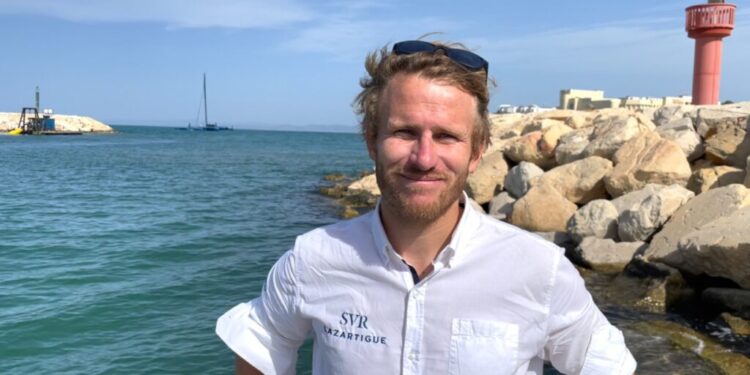Sunday, May 29, 2022, François Gabart arrived in Tunis, after having traveled the 455 miles which separate Marseille from Carthage aboard his maxi-Timaran Le Svr-Lazartigue. “The blue season” returned to this feat!
Accompanied by four team members, François Gabart established, with this crossing, a new record with a time of 1:55’37 ”, beating the previous record of Pascal Bidégory by 25 minutes in 2:20 p.m. 34 “, which was part of the crew and thus saw his own record improve.
François Gabart is no longer to be presented. Experienced sailor, confirmed skipper, it is not at his first feat. Holder of several records, he has, in particular, still to date, since December 17, 2017, the solo world tour record in 42 days, 16 hours, 40 minutes and 35 seconds.
How was the idea of this crossing from the former Sémaphore de Frioul off the coast of Marseille in the direction of Sidi Bou Saïd at the entrance to the Tunis bay? François Gabart says that he had been in the Mediterranean for a month and that he had to go with his crew in Tunis.
Judging the favorable winds, and in particular an episode of Mistral which presented itself before departure, the bet is taken to cross by pushing the trimaran to try a first record aboard a boat, released from shipyards last July, and equipped with the latest innovations.
The SVR-Lazartigue, baptized on September 20, is an exceptional boat, by its size, 31 meters long and 23 wide, its design and its foils (lateral appendages). Thanks to its lateral appendages, the boat can literally fly on the water.
As soon as he exceeds 15 knots, the trimaran begins to raise himself, thanks to the foils, to, from 30 knots, leave only a tapered trail over the water. The decrease in the bull’s friction on the water and the aerodynamics of the platform, designed to have optimal air penetration, make it possible to gain speed.
With an original platform and its two cockpits under transparent bubble, integrated into the central shell, this giant of the seas, high as a 12 -storey building, has a futuristic look and allows to navigate with a higher level of safety for the crews.
Besides this concentrate of technologies, the sailboat was also designed to save the maximum energy. Without minimizing the environmental impact of the construction of its trimaran, François Gabart explains the autonomy operation, production and energy management on board.
Admittedly, he says, the boat sails with the wind but it necessarily uses energy. Everything has been thought of for its autonomy, since we find on board SVR-Lazartigue solar panels and hydrogenerators who produce their own electricity. As for waste management,
Anticipation allows the minimum reduction of waste on board, which is sorted, packaged to finally be thrown on arrival. The question of water autonomy is also arising and is resolved by a scytherizer, on board, which makes it possible to filter sea water and make it soft and therefore specific to consumption.








